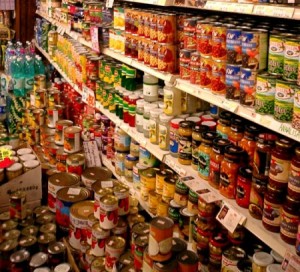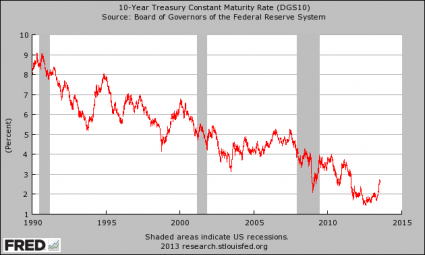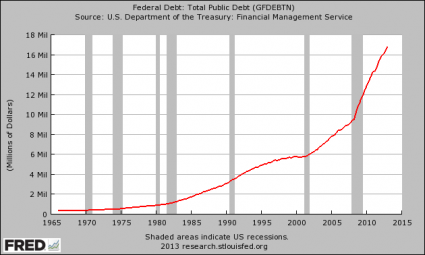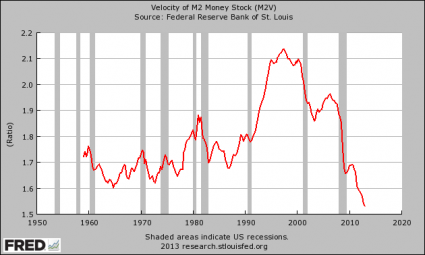 Do you think that you know how to prepare for the collapse of the economy? If so, are you putting that knowledge into action? In America today, people are more concerned about the possibility of an economic collapse than ever before. It has been estimated that there are now three million preppers in the United States. But the truth that nobody really knows the actual number, because a lot of preppers keep their “prepping” to themselves. So what are all of those people preparing for exactly? Well, survey after survey has shown that “economic collapse” is the number one potential disaster that preppers are most concerned about. Of course that shouldn’t be surprising because we truly are facing economic problems that are absolutely unprecedented. We are living in the greatest debt bubble in the history of the world, the global banking system has been transformed into a high-risk pyramid scheme of debt, risk and leverage that could collapse at any time, and wealthy countries such as the United States have been living way above their means for decades. Meanwhile, the United States is being deindustrialized at a blinding pace and poverty in this country is absolutely exploding. Anyone that is not concerned about the economy should have their head examined. Fortunately, I have found that an increasing number of Americans are becoming convinced that we are heading for a horrific economic crisis. Once they come to that realization, they want to know what they should do.
Do you think that you know how to prepare for the collapse of the economy? If so, are you putting that knowledge into action? In America today, people are more concerned about the possibility of an economic collapse than ever before. It has been estimated that there are now three million preppers in the United States. But the truth that nobody really knows the actual number, because a lot of preppers keep their “prepping” to themselves. So what are all of those people preparing for exactly? Well, survey after survey has shown that “economic collapse” is the number one potential disaster that preppers are most concerned about. Of course that shouldn’t be surprising because we truly are facing economic problems that are absolutely unprecedented. We are living in the greatest debt bubble in the history of the world, the global banking system has been transformed into a high-risk pyramid scheme of debt, risk and leverage that could collapse at any time, and wealthy countries such as the United States have been living way above their means for decades. Meanwhile, the United States is being deindustrialized at a blinding pace and poverty in this country is absolutely exploding. Anyone that is not concerned about the economy should have their head examined. Fortunately, I have found that an increasing number of Americans are becoming convinced that we are heading for a horrific economic crisis. Once they come to that realization, they want to know what they should do.
And the reality is that “getting prepared” is going to look different for each family based on their own unique circumstances. Some people have a lot of resources, while others have very little. Some people are very independent of the system and can move wherever they want, while others are totally dependent on their jobs and must stay near the cities at least for now.
In addition, it is important to distinguish between the “short-term” and the “long-term” when talking about economic collapse. As I have written about previously, our economic collapse is not going to happen all at once. It is going to unfold over time. In the “short-term”, many are moving money around and are building up “emergency funds” to prepare for the next recession. For the “long-term”, many are storing up food and huge stockpiles of survival supplies in order to be prepared for the total collapse of society. Both approaches are wise, but it is important to keep in mind that different approaches will be needed at different times.
The strategies posted below are a mix of both short-term and long-term strategies. Some will be important for our immediate future, while others may not be needed for a number of years. But in the end, you will be very thankful for the time and the effort that you spent getting prepared while you still could.
The following are 25 things that you should do to get prepared for the coming economic collapse…
#1 An Emergency Fund
Do you remember what happened when the financial system almost collapsed back in 2008? Millions of Americans suddenly lost their jobs, and because many of them were living paycheck to paycheck, many of them also got behind on their mortgages and lost their homes. You don’t want to lose everything that you have worked for during this next major economic downturn. It is imperative that you have an emergency fund. It should be enough to cover all of your expenses for at least six months, but I would encourage you to have an emergency fund that is even larger than that.
#2 Don’t Put All Of Your Eggs Into One Basket
If the wealth confiscation in Cyprus has taught us anything, it is that we should not put all of our eggs in one basket. If all of your money is in one single bank account, it would be easy to wipe out. But if you have your money scattered around a number of different places it will give you a little bit more security.
#3 Keep Some Cash At Home
This goes along with the previous point. While it is not wise to keep all of your money at home, you do want to keep some cash on hand. If there is an extended bank holiday or if a giant burst from the sun causes the ATM machines to go down, you want to be able to have enough cash to buy the things that your family needs. Just ask the people of Cyprus how crippling a bank holiday can be. One way to keep your cash secure at home is by storing it in a concealed safe.
#4 Get Out Of Debt
A lot of people seem to assume that an economic collapse would wipe out all debts, but that will probably not be the case. In fact, if you are in a tremendous amount of debt you will be very vulnerable if the economy collapses and you are not able to find a job. Just ask the people who were overextended and lost their jobs during the last recession. So please get out of debt. Many debt collectors are becoming increasingly ruthless. In many areas of the country they are now routinely putting debtors into prison. You do not want to be a slave to debt when the next wave of the economic collapse strikes.
#5 Gold And Silver
In the long-term, the U.S. dollar is going to lose a tremendous amount of value and inflation is going to absolutely skyrocket. That is one reason why so many people are investing very heavily in gold, silver and other precious metals. All over the globe, the central banks of the world are recklessly printing money. Everyone knows that this is going to end very badly. In fact, there is already a push in more than a dozen U.S. states to allow gold and silver coins to be used as legal tender. Someday you will be glad that you invested in gold and silver now while their prices were still low.
#6 Reduce Your Expenses
A lot of people claim that they can’t put any money toward prepping, but the truth is that we all have room to reduce our expenses. We all spend money on things that we do not really need. Those that are “lean and mean” will tend to do much better during the times that are coming.
#7 Start A Side Business
If you do not have much money, a great way to increase your income is by starting a side business. And it does not take a lot of money – there are many side businesses that you can start for next to nothing. And starting a side business will allow you to become less dependent on your job. In this economic environment, a job could disappear at literally any time.
#8 Move Away From The Big Cities If Possible
For many people, this is simply not possible. Many Americans are still completely and totally dependent on their jobs. But if you are able, now is a good time to move away from the big cities. When the next major economic downturn strikes, there will be rioting and a dramatic rise in crime in the major cities. If you are able to move to a more rural area you will probably be in much better shape.
#9 Store Food
Global food reserves have reached their lowest level in nearly 40 years. As the economy gets even worse and global weather patterns become even more unstable, the price of food will go much higher and global food supplies will become much tighter. In the long run, you will be glad for the money that you put into long-term food storage now.
#10 Learn To Grow Your Own Food
This is a skill that most Americans possessed in the past, but that most Americans today have forgotten. Growing your own food is a way to become more independent of the system, and it is a way to get prepared for what is ahead.
#11 Nobody Can Survive Without Water
Without water, you would not even make it a few days in an emergency situation. It is imperative that you have a plan to provide clean drinking water for your family when disaster strikes.
#12 Have A Plan For When The Grid Goes Down
What would you do if the grid went down and you suddenly did not have power for an extended period of time? Anyone that has spent more than a few hours without power knows how frustrating this can be. You need to have a plan for how you are going to provide power to your home that is independent of the power company.
#13 Have Blankets And Warm Clothing On Hand
This is more for emergency situations or for a complete meltdown of society. During any major crisis, blankets and warm clothing are in great demand. They also could potentially make great barter items.
#14 Store Personal Hygiene Supplies
A lot of preppers store up huge amounts of food, but they forget all about personal hygiene supplies. During a long crisis, these are items that you would greatly miss if you do not have them stored up. These types of supplies would also be great for barter.
#15 Store Medicine And Medical Supplies
You will also want to store up medical supplies and any medicine that you may need. In an emergency situation, you definitely would not want to be without bandages and a first-aid kit. Over the course of a long crisis, you do not want to run out of any medicines that are critical for your health.
#16 Stock Up On Vitamins
A lot of preppers do not think about this either, but it is very important. These days, it is becoming increasingly difficult to get adequate nutrition from the foods that we eat. That is why it is very important to have an adequate store of vitamins and other supplements.
#17 Make A List Of Other Supplies That You Will Need
During any crisis, there will be a lot of other things that you will need in addition to food and water. The following are just a few basic things that it would be wise to have on hand…
– an axe
– a can opener
– flashlights
– battery-powered radio
– extra batteries
– lighters or matches
– fire extinguisher
– sewing kit
– tools
This list could be much, much longer, but hopefully this will get you started.
#18 Don’t Forget The Special Needs Of Your Babies And Your Pets
Young children and pets have special needs. As you store supplies, don’t forget about the things that they will need as well.
#19 Entertainment
This may sound trivial, but the truth is that our entertainment-addicted society would become very bored and very frustrated if the grid suddenly went down for an extended period of time. Card games and other basic forms of entertainment can make enduring a crisis much easier.
#20 Self-Defense
In the years ahead, being able to defend your home and your family is going to become increasingly important. When the economy crashes, people are going to start to become very desperate. And desperate people do desperate things.
#21 Get Your Ammunition While You Still Can
Your firearms will not do you much good if you do not have ammunition for them. Already there are widespread reports of huge ammunition shortages. The following is from a recent CNS News article…
“The run on ammunition has manufacturers scrambling to accommodate demand and reassure customers, as many new and seasoned gun owners stock up over fears of new firearms regulations at both the state and federal levels.”
Don’t just assume that you will always be able to purchase large amounts of ammunition whenever you want. Get it now while you still can.
#22 If You Have To Go…
Have a plan for what you and your family will do if you are forced to leave your home. If you do have to go, the following are some items that you will want to have on hand…
– a map of the area
– a compass
– backpacks for every member of the family
– sleeping bags
– warm clothing
– comfortable shoes or hiking boots
#23 Community
One of the most important assets in any crisis situation is community. If you have friends or neighbors that you can depend upon, that is invaluable. The time spent building those bonds now will pay off greatly during a major crisis.
#24 Have A Back-Up Plan And Be Flexible
Mike Tyson once said the following…
“Everyone has a plan until they get punched in the mouth.”
No plan ever unfolds perfectly. When your plan is disrupted, what will you do?
It will be imperative for all of us to have a back-up plan and to be flexible during the years ahead.
#25 Keep Your Prepping To Yourself
Do not go around and tell everyone in the area where you live about your prepping. If you do, then you may find yourself overwhelmed with “visitors” when everything falls apart.
And please do not go on television and brag about your prepping to a national audience.
Prepping is something that you want to keep to yourself, unless you want hordes of desperate people banging on your door in the future.
For much more on prepping, please check out some of my previous articles…
– “Should You Move To Another Country To Escape The Collapse Of America? 10 Questions To Ask Yourself First”
– “14 Questions People Ask About How To Prepare For The Collapse Of The Economy”
– “Rise Of The Preppers: 50 Of The Best Prepper Websites And Blogs On The Internet”
– “120 Powerful Pieces Of Advice For Preppers”
Sadly, most Americans still have blind faith that our “leaders” actually know what they are doing and will be able to fix things.
Most Americans still are convinced that everything is going to be just fine.
And of course the mainstream media does all they can to reinforce faith in the system. Day after day, we see mindless news headlines such as this: “Californians Champing at the Bit Over Powerball Debut“.
But if you are reading this article that means that you are probably much more awake than the average American is.
Please get prepared while you still can.
A great storm is coming, and time is quickly running out.
So do you have any points that you would add to the list above? Please feel free to post a comment with your thoughts below…

 The Russian Bear is stronger and more powerful than it has ever been before. Sadly, most Americans don’t understand this. They still think of Russia as an “ex-superpower” that was rendered almost irrelevant when the Cold War ended. And yes, when the Cold War ended Russia was in rough shape. I got the chance to go over there in the early nineties, and at the time Russia was an economic disaster zone. Russian currency was so worthless that I joked that I could go exchange a 20 dollar bill and buy the Kremlin. But since that time Russia has roared back to life. Once Vladimir Putin became president, the Russian economy started to grow very rapidly. Today, Russia is an economic powerhouse that is blessed with an abundance of natural resources. Their debt to GDP ratio is extremely small, they actually run a trade surplus every year, and they have the second most powerful military on the entire planet. Anyone that underestimates Russia at this point is making a huge mistake. The Russian Bear is back, and today it is a more formidable adversary than it ever was at any point during the Cold War.
The Russian Bear is stronger and more powerful than it has ever been before. Sadly, most Americans don’t understand this. They still think of Russia as an “ex-superpower” that was rendered almost irrelevant when the Cold War ended. And yes, when the Cold War ended Russia was in rough shape. I got the chance to go over there in the early nineties, and at the time Russia was an economic disaster zone. Russian currency was so worthless that I joked that I could go exchange a 20 dollar bill and buy the Kremlin. But since that time Russia has roared back to life. Once Vladimir Putin became president, the Russian economy started to grow very rapidly. Today, Russia is an economic powerhouse that is blessed with an abundance of natural resources. Their debt to GDP ratio is extremely small, they actually run a trade surplus every year, and they have the second most powerful military on the entire planet. Anyone that underestimates Russia at this point is making a huge mistake. The Russian Bear is back, and today it is a more formidable adversary than it ever was at any point during the Cold War.












